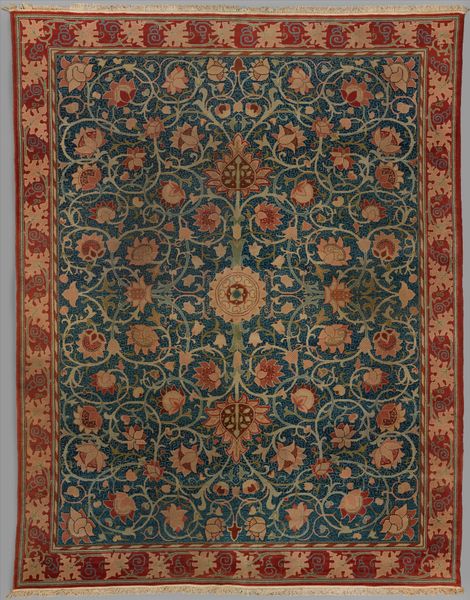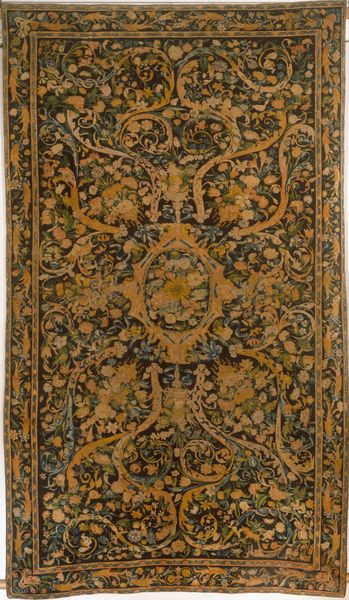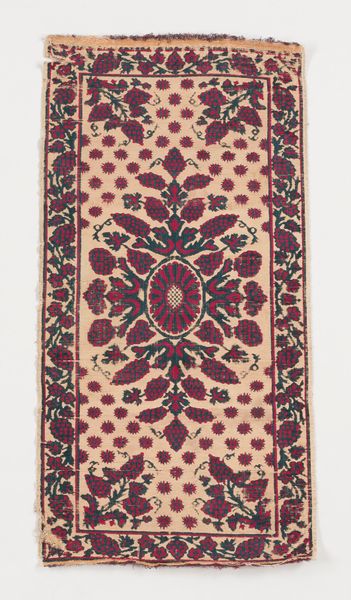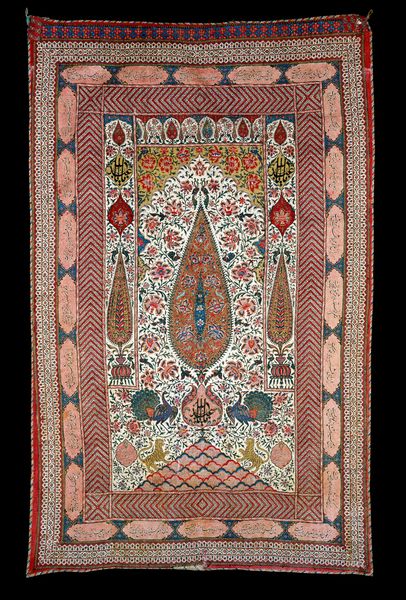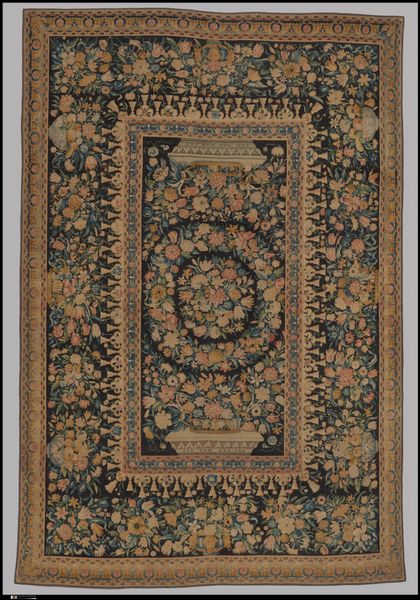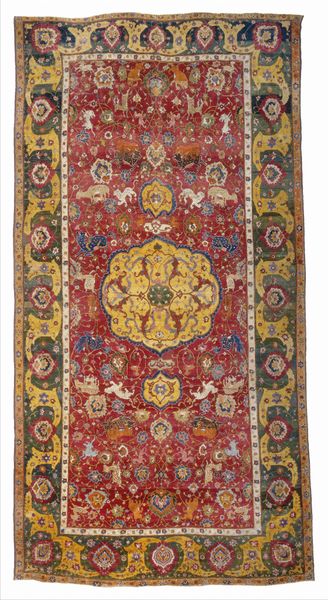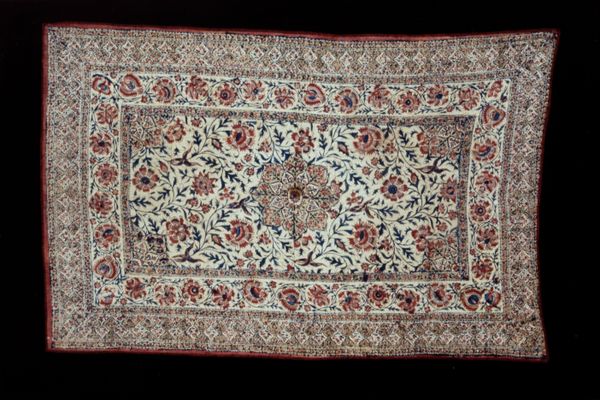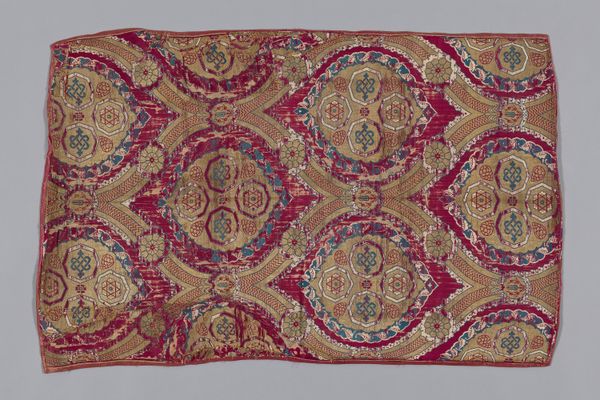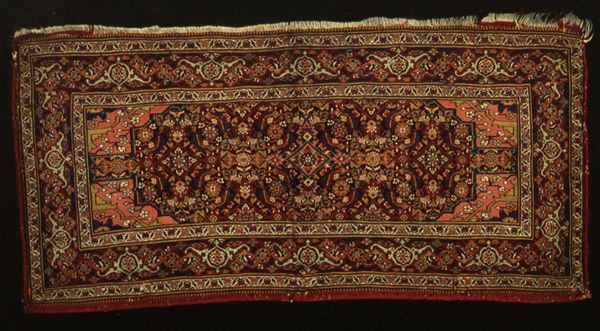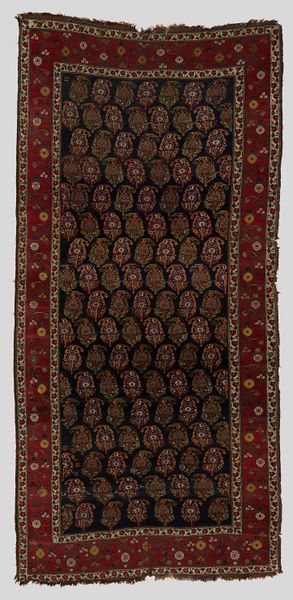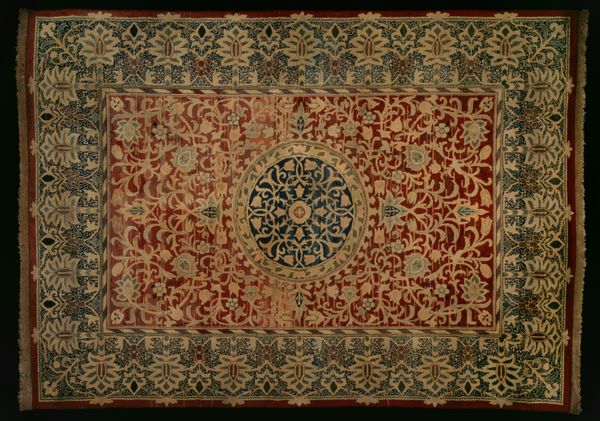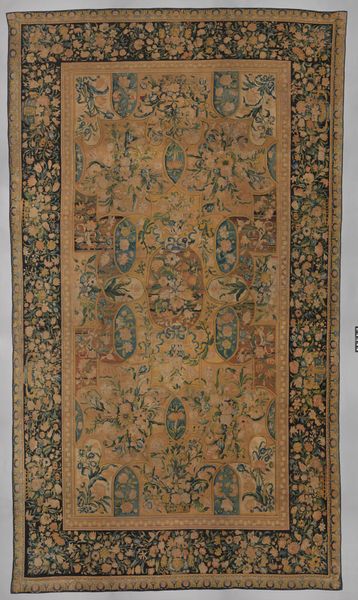
print, weaving, textile, wool
#
17_20th-century
#
natural stone pattern
#
16_19th-century
#
animal
# print
#
weaving
#
bird
#
textile
#
flower
#
wool
#
fashion and textile design
#
text
#
pattern design
#
repetitive shape and pattern
#
fruit
#
england
#
repetition of pattern
#
men
#
regular pattern
#
pattern repetition
#
textile design
#
layered pattern
#
combined pattern
Dimensions: 283 × 106 cm (111 1/2 × 41 3/4 in.) Repeat: 50.9 × 46 cm (20 × 18 1/8 in.)
Copyright: Public Domain
William Morris designed this textile, Strawberry Thief, using an indigo-discharge technique. This labor-intensive process involves dyeing the fabric a deep indigo blue, and then using a bleaching agent to remove the dye in certain areas, creating the intricate repeating pattern. The deep blues and carefully placed lighter areas give the fabric a rich, almost three-dimensional quality. Morris was deeply invested in reviving traditional craft techniques like this one, which stood in stark contrast to the mass-produced textiles of the Industrial Revolution. Strawberry Thief reflects Morris’s socialist ideals. By returning to hand-crafted methods, he hoped to elevate the status of the worker and create beautiful, meaningful objects for everyday life. The natural motifs, like the birds and strawberries, evoke a sense of pre-industrial harmony, a world where labor was more closely connected to nature and less alienated by the demands of capital. By examining the materials, making, and social context, we can appreciate Morris's textile as both a beautiful object and a statement about labor, politics, and consumption.
Comments
No comments
Be the first to comment and join the conversation on the ultimate creative platform.
